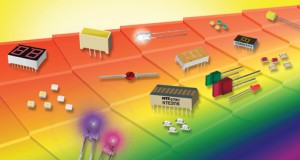Introduction
Optoelectronics is the branch of electronics that combines optics and electronics. The devices that deal with this technology is called optoelectronics devices. Optoeletronic devices can be divided into two – light sensitive devices and light generating devices. We have already discussed a good amount of optoelectronic devices in our site. You can get the links from the paragraph below.
Some of the common light sensitive devices used in electronic circuits are photodiodes, phototransistors, light sensitive resistors, photovoltaic cells, and more. Light generating optoelecronic devices include Light Emitting Diode (LED), tungsten filament lamp, cathode ray tube (CRT) and more. Some devices combine both the principles of sensitive and light generating devices like Light Dependent Resistors (LDR), Liquid Crystal Displays (LCD), optoisolators, optoreflectors and more.
Applications of Optoelectronic devices
- They can be employed for generating a wide variety of stationary or moving visual displays.
- They can be used to provide an automatic switching or alarm action in the presence or absence of a visible or invisible light source
- They can be employed to provide remote-control action via an infra-red light generator and a remotely placed detector
What is threshold frequency?
Any light source emits energy only over a certain range of frequencies or wavelengths. A graph of energy output plotted against either frequency or wavelength is called the emission spectrum for the light source. A light-sensitive device is sensitive only to a certain range of radiation frequencies. A graph of device current, voltage, or resistance plotted against frequency is known as its spectral response. For a given photosensitive material, there is a minimum radiation frequency (or maximum wavelength) that can produce a photoelectric effect; this frequency is known as the threshold frequency


Comments are closed.